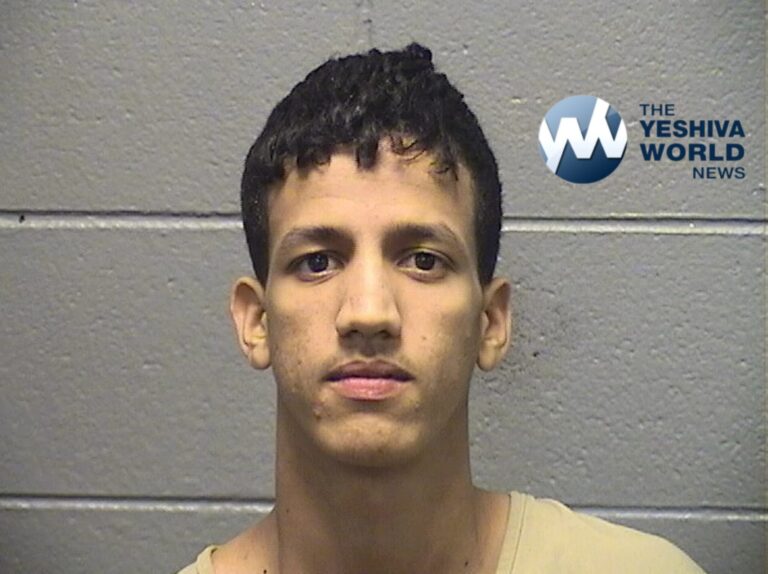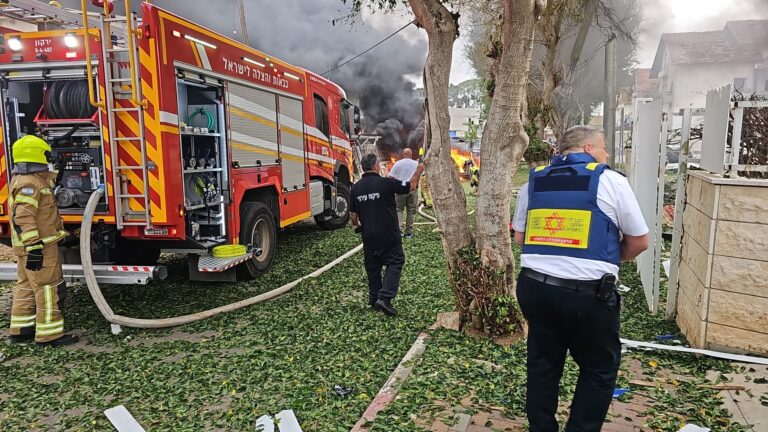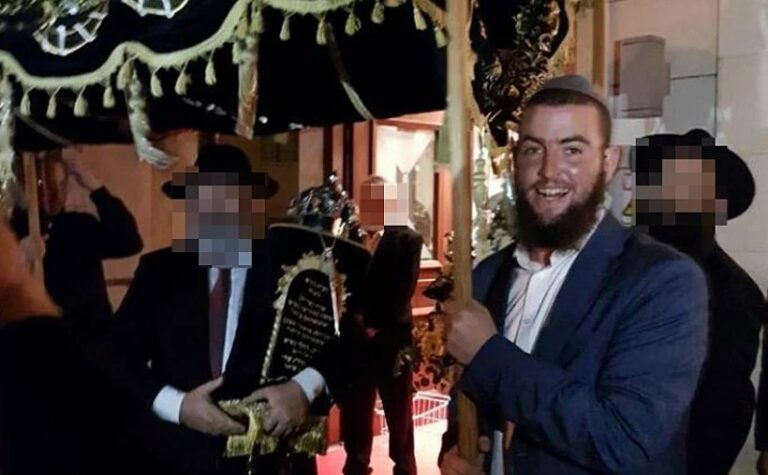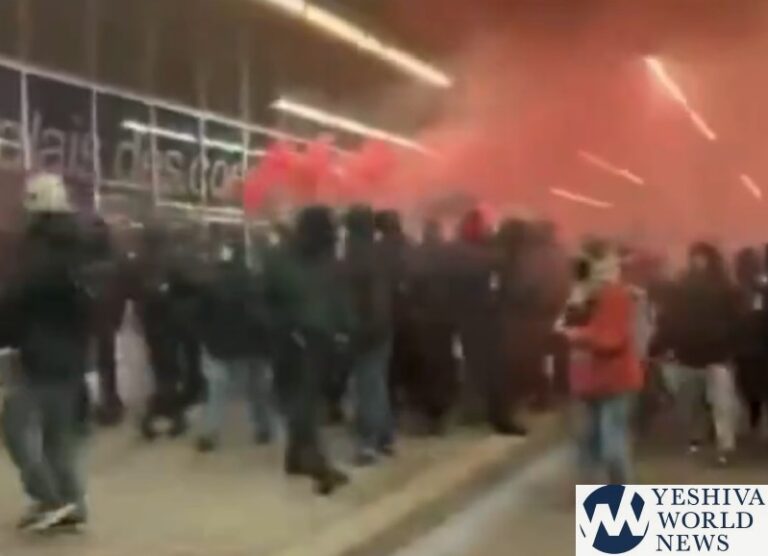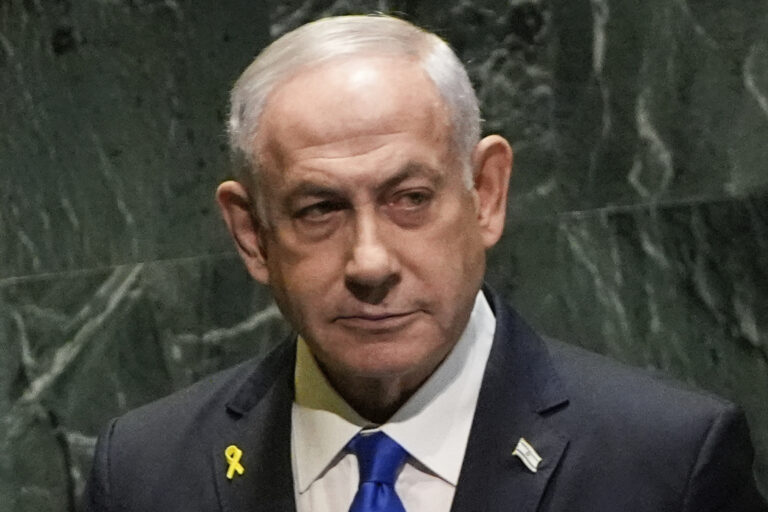By Rabbi Yair Hoffman for the Five Towns Jewish Times
As an introduction to this particular season of the Three Weeks and Tisha B’Av there are a number of questions that present themselves. Hopefully, asking them and searching for their answers will give us new insights into this time. Perhaps also these answers will direct us as to where our efforts should lie.
1] We begin our period of mourning on the 17th of Tammuz which initiates the Three Weeks. The mourning times become gradually more and more severe and strict, culminating in Tisha B’Av. Yet Chazal tell us that the overwhelming majority of the burning of the Bais HaMikdash occurred on the 10th of Av – not the 9th. Now granted we still keep the practices of mourning on the tenth of not doing laundry, eating meat or bathing – but it does not fit with the nature of what happened on the tenth. If so, why is the culmination on the ninth and not on the central point of the tragedy on the tenth?
2] We do not recite Tachanun on the Mincha before Tisha B’Av nor do we put on Tefillin on Shacharis mourning of this day. The reason is because it will eventually be a Moed. How could it be a Moed? It was a period of destruction. Massive death and destruction. The greatest tragedy ever. How could Tisha B’Av ever be a Moed?
3] What was the nature of this loss that we mourn for these three weeks? What are we mourning exactly?
4] Chazal tell us that any generation in which the Bais HaMikdash was not rebuilt – it is as if it was destroyed in that generation. Why is this so? And how can it be rectified?
So to be succinct our four questions are: Why do the Three Weeks culminate on the ninth? How is it a Moed? What are we mourning during this three week period? And how can we rectify it?
Let us start with the first two questions. We must understand that, in fact, we were destined to be destroyed. We were deserving of destruction. Our treatment of each other, our negation of our mission – of who we are supposed to be, was so profound that we were deserving of absolute destruction.
Hashem, however, in His Ultimate mercy – spared us as a nation and instead took out His Wrath- Kavyachol on the Bais HaMikdash.
Until the point where we rectify our errors, of course, we should be mourning. However, ultimately, we should realize that it was a turning point of salvation. It will be no different than a Purim – where we will commemorate the fact that our entire nation was saved. But more than just saved – redirected. We will have been redirected to our ultimate destiny and purpose in this world. The reason why we commemorate the ninth instead of the tenth is that the ninth is the day in which we first got this message. The tenth is the destruction in full force. The ninth is the message of the beginning of the destruction. It will be a Moed also, because it will be the warning sign that turned us around to full health. Just like an early heart attack warning that causes a person to turn around and now become extremely healthy again.
But now let’s move on to the next two questions – what are we mourning and how do we fix the breach?
Firstly, we must realize that HaKadosh Boruch Hu is the Ultimate Giver. His Nature is Giving in its essence – and He would like nothing more than to reward mankind. Of course, the Ramchal writes that just giving unless we earn it is not real giving – it is just spoiling. So the first thing that we are mourning is the loss of the remarkable gift that spiritually cleansed us. When we did Teshuva and brought the korbanos – the spiritual filth that was a part of us on account of our Aveiros was removed through the Bais HaMikdash. There was only one condition – that we performed the four elements of Teshuva –
1] rectifying the wrong 2] Regret – Charata 3] Vidui – Admitting the Aveirah 4] Kaballah al HaAsid – Accepting upon ourselves not to repeat the Aveirah in the future.
The Bais HaMikdash, after we met these conditions, did the rest for us. The Nesivos Shalom explains that now that we no longer have that glorious gift – we must do the cleansing ourselves.
The after-effects – the damage to our souls of these aveiros must be cleansed manually.
This is one element of our mourning. We mourn the loss of what the Bais HaMikdash achieved for us in terms of repairing our damaged souls. We must now clean and scrub our neshamos of the filth that we brought upon ourselves.
But there is something else we are also mourning and it is a major aspect of what Tisha B’Av is all about. Klal Yisroel is unique among all the nations of the world because of our exceptional ability to achieve a Dveikus Bashem- a cleaving closeness to HaKadosh Boruch Hu. It is this ability to achieve Dveikus which gave us all the Neviim that we had. It is this ability to achieve Dveikus which allows us to reach heights in our Tefillos, our learning of His Torah, and in our Midos. We had a Chofetz Chaim in our midst because of this ability to achieve Dveikus Bashem.
The Bais HaMikdash in our Midst allowed us to achieve even greater Dveikus. The loss of the Bais haMikdash was a loss of who we are as a nation. It is a negation of part of our national character. It is the metaphorical loss of our right arm.
But all is not lost. Od Yeshama beArei Yehudah UveChutzos yerushalayim.. Kol Sasson vekol simcha – kol chassan vekol kallah. We can still do it. Like the boxer who lost his right arm – he can still box with his left. Granted it is an arduous process and a herculean task– but he can achieve still.
We too can still achieve that Dveikus. We can still reach that pinnacle of Divine emulation. We can still fulfill that “Mah Hu Rachum veChanun Af attah Rachum veChanun” just as He is Mericful and Kind – so too can we attempt to emulate Him.
So how can we repair the breach? How can we rebuild the Bais HaMikdash? We know that cumulatively the performance of Mitzvos collectively by Klal Yisroel over the centuries since the Churban can and will do it. But there are things we can do to make it come quicker – to make it instantaneous as it were? If we can do this – then this would be a remarkable thing.
The answer to this question is a resounding “Yes.”
And for this answer we need to delve a bit into some of our history. There were three fascinating periods where Klal Yisroel was scheduled for destruction but the destruction was averted. Each of these times the tragedy was averted because Hashem saw something unique in a leader or member of Klal Yisroel.
During the Chait HoAigel Hashem wanted to destroy Klal Yisroel and build it anew through Moshe Rabbeinu. Moshe responded in a remarkable way:
vayChal Moshe es Pnei hashem (Shmos 32:11) –
What does this mean exactly?
The Gemorah in Brachos (32a) provides us with Shmuel’s explanation. He quotes the verse slightly later: veIm ayain mechaini nah misifrecha asher kasavta (Shmos 32:32). In other words, Moshe said – if not – if You do not forgive this nation – then erase me from Your book and strike me down now. I will give my life for this people.
It was these words, the self sacrifice to give to Klal Yisroel that changed Hashem’s mind. By Purim too, we find the same thing. How so?
if you think about it, Esther’s plan does seem to be somewhat bizarre. Does one get a king, one’s husband to listen, by getting him jealous? If anything, he will be more angered at such a wife and will not act to save her people!
No. This could not have been the original plan of Esther. Rather, the Meshech Chochma writes that her plan was to convince the king that SHE WAS HAVING AN AFFAIR WITH HAMAN. The king’s reaction would be to destroy both her and Haman. Hashem, however, said, “Esther was so willing to give of herself like this so that Klal Yisroel will be saved? I can’t let that happen.”
And Hashem changed the plan through a Nais – a miracle.
We find another time when the Plishtim were attacking Klal Yisroel. And yet we find a very strange Shofet in Klal Yisroel. Shimshon is a Shofet. The Gemorah in Sotah says that the Shechina was melafefes before him. He was on the Madreigah of Ruach HaKodesh. The leader of Klal Yisroel – no different than the Chofetz Chaim, the Chazon ish, Rav Moshe Feinstein in our own generation. How then do we read that Shimshon is marrying a non-Jewish woman? How do we read that he gambles with goyim? That he makes bets with them? How then do we read that this leader of Klal Yisroel, someone thoroughly proficient in Shas, Choshain Mishpat and has Ruach HaKodesh, makes riddles with goyim?
The answer is most fascinating, of course. Shimshon was able to battle the Plishtim with no problem – but there was the issue of repercussions. The Plishtim would take revenge upon Klal Ysiroel. Unless of course, Shimshon the Tzaddik were tp put on a mask. If he were to creat another persona – so to speak – one where the Plishtim would never associate with the regular normal leadership of Klal Yisroel – then there would be no repercussions. They would not take revenge, because this is a third party entirely. Indeed, to this day Shimshon’s reputation is tainted in the goyish world – He sacrificed his reputation for all generations so that Klal Yisroel will be saved.
Esther too would have sacrificed her life and reputation – why? She wish to save Klal Yisroel. And Moshe agreed to do it as well.
This then is what Hashem wants of us.
When He sees our commitment to Klal Yisroel, to the point where we sacrifice and we are willing to give of ourselves – then He brings Geulah and Yeshuah. It happened at the Chait HoAigel, it happened with Shimshon and it happened during Purim.
This is what we need to do to repair the breach. By rights we should have been destroyed, and the repair, the solution is if we emulate the Ultimate Giver – Hashem and give of ourselves to Klal Yisroel. To sve Klal Yisroel spiritually, by giving of ourselves.
If we can achieve this Madreigah – then we can fully appreciate the nature of the Three Weeks and ultimately aspire to the rebuilding of the Bais HaMikdash quickly in our days.
The halachos that follow help us achieve that state of mourning that will inspire us to rectify the breaches. Indeed, even studying the halachos well, which is an indication of our love and profound desire to do His Will, is the beginning of repairing the loss. This is the message that we must keep in mind as well study this compilation.
The period of mourning known as the Three Weeks (or Drei Voch or Bain HaMetzarim) begins with the 17th of Tammuz. Five tragedies occurred on this day.
1] The first set of tablets were shattered when Moshe Rabbeinu witnessed the nation involving itself in the sin of the Golden Calf
2] The Korban Tamid, the daily offering, was stopped in the time of the first Beis HaMikdash. Even though the walls of the city of Yerushalayim were already broken through, the Kohanim could still offer the Korban Tamid. How so? The enemy soldiers were bribed. This stopped, however, on the 17th of Tammuz
3] During the Second Beis HaMikdash the city walls were surrounded on the 17th of Tammuz. According to the Talmud Bavli this same event occurred on the 9th of Tammuz for the First Beis HaMikdash. Why then did we not make a fast on the 9th of Tammuz? The answer is that the sages did not wish to make two such fasts. It would be too much for Klal Yisroel to bear. The Talmud Yerushalmi, however, states that even in the First Beis HaMikdash the walls were surrounded on the 17th – it is just that an error had been made.
4] Apostumus burned the Torah during the Roman occupation in the era of the Second Beis HaMikdash
5] A statue was erected in the Heichal of the Beis HaMikdash. There is a question among the Amoraim whether this refers to the statue erected in the first Beis HaMikdash by Menashe or in the second one by the Greek general Apostumus.
THE REASON FOR THE FAST
The purpose of the fast, however, is not merely to recall these tragic events, but also to awaken us to do Teshuvah. The obligation is therefore to examine our actions and to repent the evil ones. This should be done in three areas: 1] Mitzvos Bain Adam l’Makom – those Mitzvos between Man and Hashem 2] Mitzvos Bain Adam l’Chaveiro – Mitzvos between man and his friend 3] Tikkun HaMiddos – repairing any character flaw we may have. It is wrong to waste away the hours of a fast day on trips, or on shopping.
WHO SHOULD FAST
All healthy adults over the age of Bar or Bas Mitzvah are obligated to fast. There is no Mitzvah of Chinuch to have younger children fast. However, they should not eat or drink excessively and should avoid sweets and candy in order to mourn with the nation (See MB 550:5)
A sick person, however, should not fast. This applies even if the illness is not life-threatening. If someone has a headache he should continue to fast. If, however, it is completely debilitating some Poskim permit the person to break the fast.
Pregnant and nursing women who feel weak should not fast (Tisha B’Av is an exception and of course Yom Kippur). There is a danger of losing the baby
If someone is eating, however, they should only eat what is necessary to maintain one’s health and not more in order to participate in the nation’s mourning.
If one mistakenly ate this does not mean that the person should continue eating. One must still continue the fast. Some say that one should fast another day as an atonement (See SA 449:3).
The fast does not begin at night, but rather at Amud HaShachar. However, if one went to sleep without having in mind to awaken before the fast then one may not eat prior to Amud HaShachar. When the fast is over one may eat meat and drink wine. Some authorities cite the Zohar as ruling that if one did go to sleep, even if one had in mind to eat, one may only drink before Amud HaShachar.
Eating and drinking are forbidden. Bathing, anointing and wearing shoes, however, are all permitted. A Baal Nefesh, one who is concerned about his spirituality should refrain from bathing and anointing (See MB 550:6).
If a person normally rinses his or her mouth every morning and would suffer anguish if it is not done then it may be done during a fast if one bends forward so that it not enter the mouth inadvertently (MB 567:11)
The verse in Aichah states (1:3), “All who pursued her reached her between the two tragedies..” Our sages understood this to mean between the 17th of Tamuz and the 9th of Av. During this time terrible tragedies occurred to the Jewish people including the destruction of both Batei HaMikdash.
During this time we do not get married, but we can get engaged. Indeed, one may even make an engagement party without music.
Generally speaking we do not have dances with musical instruments and singing during this time. Indeed, one should not even listen to recorded music.
However, many Poskim permit playing and practicing music if one is studying how to do so.
Haircuts are also forbidden according to Ashkenazic custom. This includes the beard as well. One may also not give a haircut to a child during these times. A man may trim his mustache if it affects his eating. A woman mat cut excessive side hair (MB 551:79). Fingernails may be cut freely until Rosh Chodesh. For Shabbos they may be trimmed even after Rosh Chodesh. If one has had a boy and is celebrating a Bris Milah he may take a haircut even in the week in which Tisha B’Av falls.
The custom is not to recite the blessing of a Shecheyanu on a new fruit or item during the weekdays. One can and should wait until Shabbos to recite the blessing. This only pertains to Shehecheyanu on an item, but a Shehecheyanu on a Mitzvah should be recited during the week. Therefore, a Shehecheyanu on a Pidyon HaBen is recited on time.
One should be extra careful during these times not to walk alone between the 4th hour of the day until the ninth hour of the day (MB 551:102).
When the month of Av enters we minimize joyous types of activity – we do not celebrate. If a Jew has a legal case he should delay it until the month of Elul or at least until after the 9th of Av.
During the Nine Days we do not plant things nor do we build, or paint or hang pictures or tapestries. All of these activities are joyous ones and should not be done during this time. When there is a chance of a huge loss, however, one may do so.
If one had contracted previously with a gentile for an entire job, and it was not completed by the Nine Days, he should try to appease him by offering him something not to work during this time. If this is not feasible the gentile may continue.
During the Nine Days we try to minimize our business activities. However, if something is particularly cheaper during these times one may purchase it.
It is the custom for Ashkenazim not to consume meat or wine during the Nine Days.
The author can be reached at [email protected]






